A high-performance business website is a cornerstone of success, with 88% of consumers researching online before purchasing, per a recent Google study. A well-planned site drives engagement, conversions, and brand credibility. This article shares essential tips for creating a website that performs flawlessly, using CMS platforms to streamline development and optimize user experiences.
Defining Your Website’s Purpose
A clear purpose guides every decision in your website’s design.
Setting Goals and Objectives
Start by identifying your website’s core objectives, such as increasing sales, generating leads, or showcasing a portfolio. For instance, an e-commerce business might aim for a 20% conversion rate increase. CMS platforms help define these goals by offering analytics to track user behavior from day one.
Understanding Your Audience
Know your target audience’s needs and preferences. A 2024 survey found 75% of users prefer personalized content. Use CMS-driven tools to create audience personas, ensuring your site resonates with visitors, whether they’re local customers or global clients.
Conducting Market and Competitor Research
Research sets your website apart in a crowded digital space.
Analyzing Market Trends
Study industry trends to align your site with user expectations. In 2025, 60% of searches are voice-based, per recent data, emphasizing conversational content. CMS platforms can host blogs optimized for voice search queries like “best coffee shop near me.”
Evaluating Competitors
Analyze competitors’ websites to identify strengths and gaps. Tools like SEMrush reveal their SEO strategies, while CMS analytics track competitor-inspired features, such as interactive product demos, helping you differentiate your site effectively.
Planning Website Structure and Content
A solid plan ensures a seamless user experience.
Designing Site Architecture
Map out your site’s structure with clear navigation. For example, a service-based business might include Home, Services, About, and Contact pages. CMS platforms like those with drag-and-drop editors simplify creating intuitive layouts without coding.
Crafting High-Quality Content
Content drives engagement. Use CMS tools to schedule blogs, videos, or case studies that align with user intent. A 2024 report notes that 70% of users engage with sites offering relevant content, boosting retention and conversions.
Optimizing for Performance and Speed
Speed is critical for user satisfaction and SEO.
Prioritizing Load Times
Google’s 2025 Core Web Vitals emphasize page speed, with 53% of users abandoning sites that take over three seconds to load. Optimize images, minify CSS, and use CMS platforms with built-in caching to ensure fast performance across devices.
Leveraging CDN and Hosting
A content delivery network (CDN) reduces latency by serving content from nearby servers. CMS platforms often integrate with CDNs like Cloudflare, enhancing speed for global audiences, crucial for businesses targeting international markets.
Ensuring Mobile Responsiveness
A mobile-friendly site is non-negotiable.
Designing for Mobile Users
With 60% of web traffic from mobile devices, per 2024 Statista data, responsive design is essential. CMS platforms offer mobile-optimized templates, ensuring your site looks great on smartphones and tablets.
Testing Across Devices
Use tools like BrowserStack to verify responsiveness. CMS dashboards can preview mobile views, helping you tweak layouts for seamless experiences, such as ensuring buttons are tap-friendly for e-commerce checkouts.
Implementing SEO Best Practices
SEO drives visibility and organic traffic.
Optimizing On-Page Elements
Incorporate keywords, meta tags, and alt text to boost rankings. A 2025 trend shows 40% of voice search results come from featured snippets. CMS plugins like Yoast SEO simplify optimization, targeting queries like “local business services.”
Building a Strong Backlink Strategy
Quality backlinks improve authority. Use CMS-driven blogs to create shareable content, attracting links from industry sites. For example, a tech startup’s blog on AI trends can earn backlinks, enhancing SEO performance.
Integrating Security Features
Security builds trust and protects your business.
Implementing SSL and Encryption
An SSL certificate is mandatory, with 95% of browsers flagging non-secure sites in 2025. CMS platforms provide built-in SSL and secure hosting, safeguarding user data like contact form submissions.
Regular Security Audits
Conduct audits to identify vulnerabilities. CMS platforms with security plugins, like those offering two-factor authentication, help maintain compliance with regulations like GDPR, critical for global businesses.
Tracking Performance and Analytics
Data-driven insights refine your website’s impact.
Monitoring Key Metrics
Track metrics like bounce rate, conversion rate, and traffic sources using Google Analytics or CMS-integrated dashboards. A 2024 study found 65% of businesses use analytics to optimize user journeys, such as improving checkout flows.
Iterating Based on Data
Analyze user behavior to refine content or design. For instance, if analytics show high drop-off on a service page, a CMS can quickly update content to address user pain points, boosting engagement.
Emerging Trends in Website Development
Stay ahead with cutting-edge tools and strategies.
AI-Powered Personalization
AI tools, adopted by 75% of businesses by 2027 per Forrester, enhance user experiences. CMS platforms with AI plugins can deliver personalized content, like product recommendations, increasing conversions by 30%.
Progressive Web Apps (PWAs)
PWAs offer app-like experiences on the web. In 2025, 50% of businesses plan to adopt PWAs, per Gartner. CMS platforms support PWA integration, enabling fast, offline-capable sites for enhanced user retention.
Overcoming Common Challenges
Address hurdles to ensure a high-performance site.
Managing Budget Constraints
High-performance sites require investment. CMS platforms reduce costs with pre-built templates and hosting, allowing startups to allocate funds to features like custom animations.
Keeping Up with Trends
Rapid tech changes can overwhelm teams. Use CMS platforms with update notifications and plugin ecosystems to adopt trends like voice search optimization without extensive redevelopment.
Conclusion
Planning a high-performance business website requires strategic focus on purpose, user experience, performance, and security. By leveraging CMS platforms for content management, SEO, and analytics, businesses can create fast, engaging, and secure sites that drive results. With 88% of consumers researching online before buying, these tips ensure your website stands out in 2025’s competitive digital landscape, delivering value to users and boosting your brand’s success.

